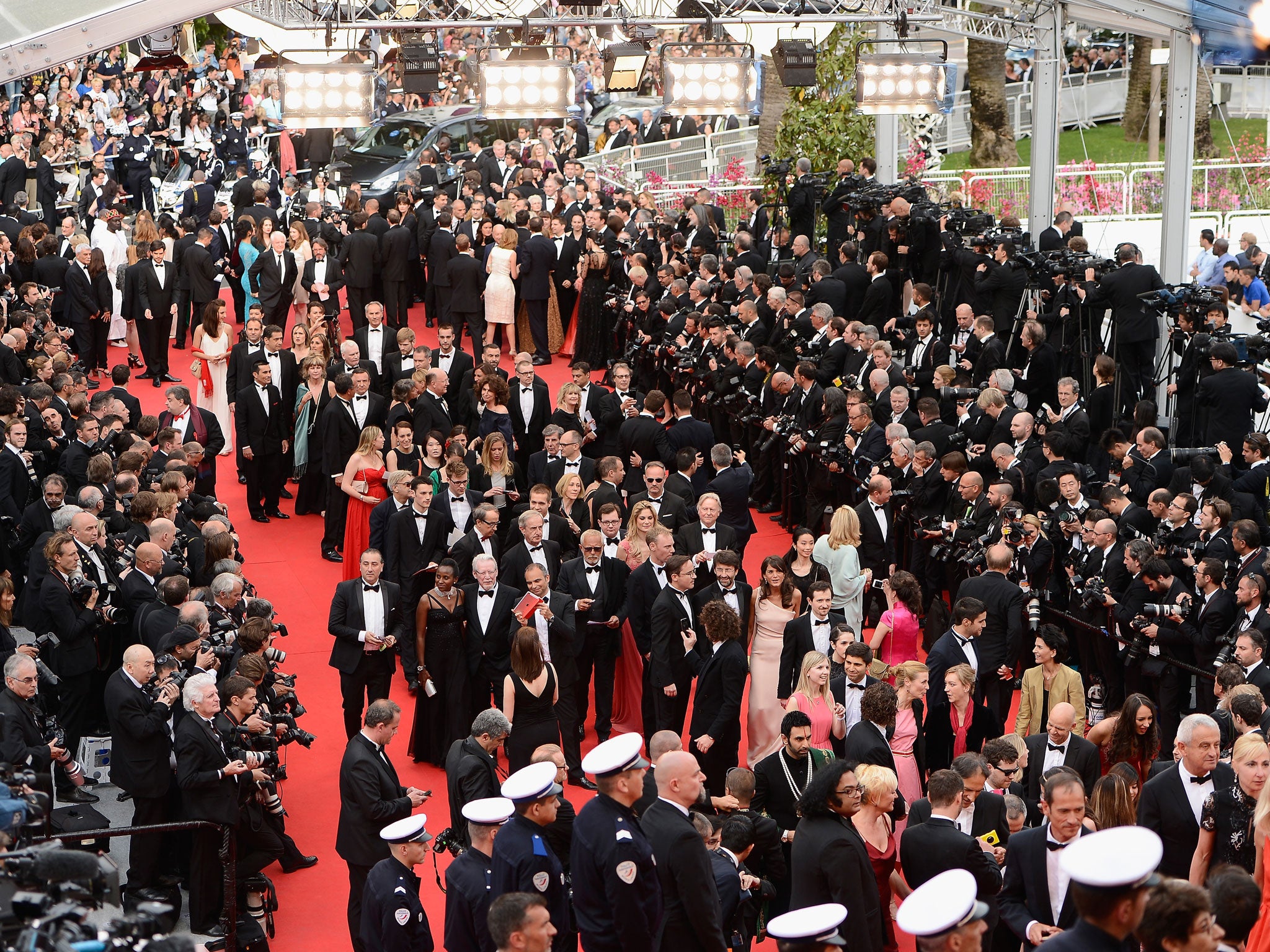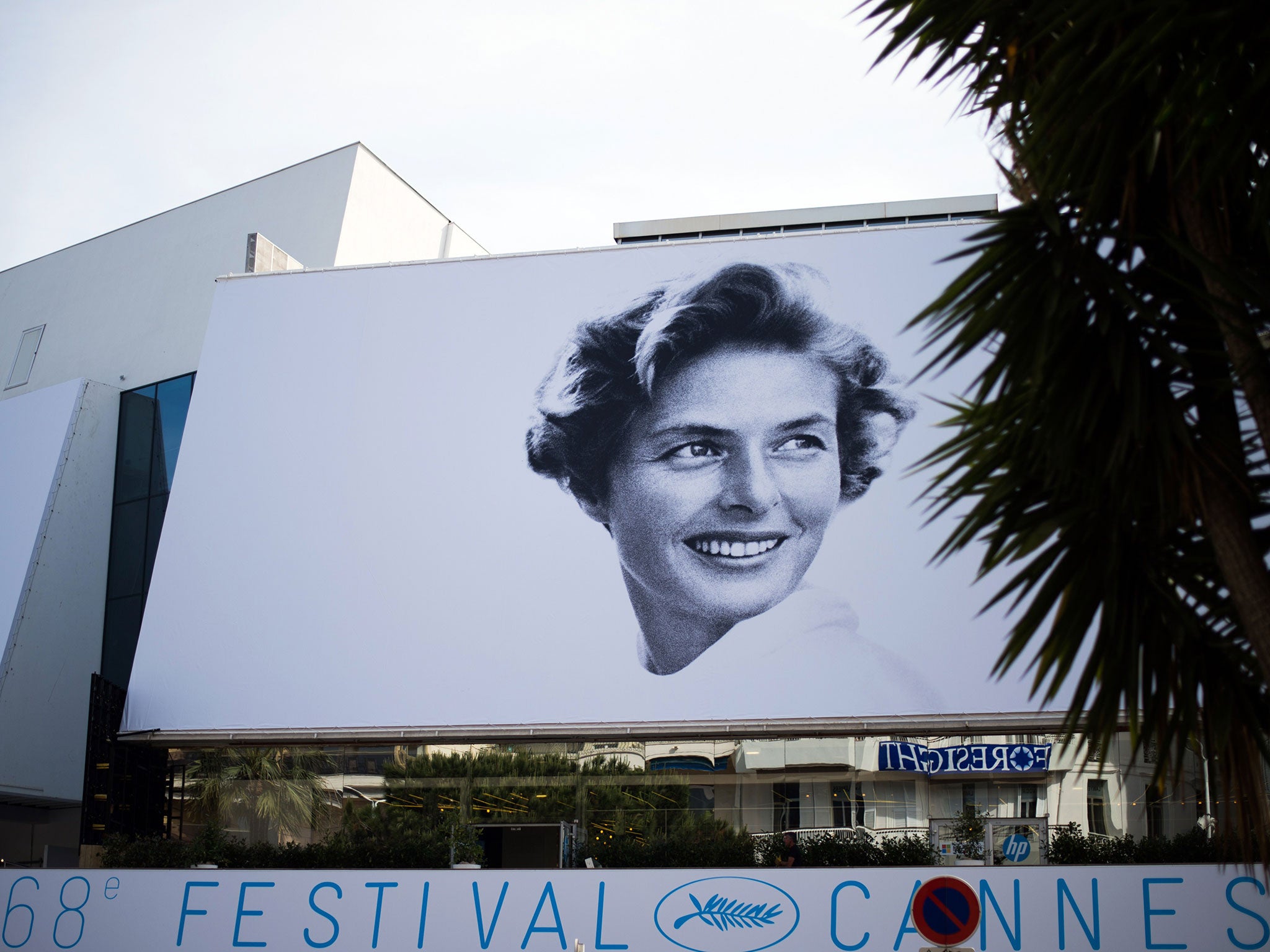Cannes Film Festival 2015: From the Palme d'Or to Ingrid Bergman and the judges - what is the glitzy event all about?
Cannes kicks off on the French Riviera on 13 May - here's your handy guide

Your support helps us to tell the story
From reproductive rights to climate change to Big Tech, The Independent is on the ground when the story is developing. Whether it's investigating the financials of Elon Musk's pro-Trump PAC or producing our latest documentary, 'The A Word', which shines a light on the American women fighting for reproductive rights, we know how important it is to parse out the facts from the messaging.
At such a critical moment in US history, we need reporters on the ground. Your donation allows us to keep sending journalists to speak to both sides of the story.
The Independent is trusted by Americans across the entire political spectrum. And unlike many other quality news outlets, we choose not to lock Americans out of our reporting and analysis with paywalls. We believe quality journalism should be available to everyone, paid for by those who can afford it.
Your support makes all the difference.The Cannes Film Festival begins on Wednesday 13 May but amid all the glitz and glamour, many people will be wondering why it's all such a big deal.
So for those who know that the extravaganza involves movies, but not much else, allow us to answer some of your most burning questions.
Where is Cannes?
Cannes is a city located on the French Riviera in the South of France. It is a luxurious place known for attracting the rich and famous. The festival itself takes place at the Palais des Festivals et des Congres.
When is the festival held?
The film festival is an annual event, with the 68th taking place from 13 to 24 May this year. You can only attend if you are invited, sorry folks.
What is the point of the festival?
Cannes previews new films and documentaries from a range of genres across the world and is renowned as one of the most prestigious film festivals.
When did Cannes begin?
The festival was founded as the Festival du Film de Cannes in 1947, with sixteen countries presenting films. It has its origins in the late 1930s, however, when the French Minister of National Education, Jean Zay, set up an international cinematographic festival.

What is the Palme d’Or and why is it such a big deal?
The Palme d’Or (Golden Palm) was created in 1955 to replace the Grand Prix du Festival (the Grand Prize). It is the highest accolade up for grabs at the festival.
There are two Palme d’Ors awarded each year - one for feature film and another for best short film - but when people refer to the prize, they usually mean the former.
The Palme d’Or is presented in a case of blue Moroccan leather with a white suede lining. The palm itself is made of 24-carat gold, hand cast into a wax mould and laid on a cushion of cut crystal.

Watch Apple TV+ free for 7 days
New subscribers only. £8.99/mo. after free trial. Plan auto-renews until cancelled

Watch Apple TV+ free for 7 days
New subscribers only. £8.99/mo. after free trial. Plan auto-renews until cancelled
French director Agnes Varda will become the first female filmmaker to receive the honourary Palme D’Or at this year’s closing ceremony.
What are the opening and closing films?
French drama Standing Tall will open the ceremony after being chosen for how its themes respond to the Charlie Hebdo shootings. Luc Jacquet’s Ice and the Sky has been selected to close Cannes for drawing attention to the future of the planet.
Who are the main contenders this year?
Sci-fi comedy The Lobster, starring Rachel Weisz and Colin Farrell, is definitely one to watch from Greek director Yorgos Lanthimos. It’s set in a hotel in a dystopian future, where the residents must find a spouse within 45 days to avoid being turned into wild animals.
Then there’s The Here After, about a young jail-bird’s return to society; Youth with Michael Caine as a retired conductor; drama Our Little Sister about four sisters sharing their late grandmothers house and mob thriller Sicario.
What major hits have won the top prize in the past?
Nuri Bilge Ceylan’s Turkish drama Winter Sleep won the Palme d’Or last year, with Blue is the Warmest Colour triumphing in 2013.
Michael Moore’s controversial documentary Fahrenheit 9/11 took it in 2004, Roman Polanski’s The Pianist was crowned victor in 2002 and Quentin Tarantino had a hit with Pulp Fiction in 1994. Then there was the Coen Brothers’ Barton Fink in 1991and Martin Scorsese’s Taxi Driver in 1976.
David Lean’s Brief Encounter won the Grand Prix in 1946 and the first ever winner was Cecil B DeMille with Union Pacific.
What are the awards categories?
The Official Selection is the festival’s main event and could be called ‘the line-up’. This is divided into the following categories:
Competition – 20 films in the running for the Palme d’Or, shown in the main Theatre Lumiere.
Un Certain Regard – 20 films chosen from around the world that often display debuts and experimental techniques
Out of Competition – Films that do not compete for the Palme d’Or due to not fitting the criteria, but the committee wants to recognise
Special Screenings – Films shown in a specially-adapted environment, chosen by the committee
Cinefondation – Shots and medium-lengths exclusively from film students worldwide
Short Films – These compete for the Short Film Palme d’Or
Are there specific criteria?
Films for Competition, Out of Competition and Un Certain Regard must have been produced in the 12 months prior to the festival. They cannot have been presented internationally in any way, including at any international film festivals or online.
Films must also comply with this official rule: “The spirit of the Festival de Cannes is one of friendship and universal co-operation. Its aim is to reveal and focus attention on works of quality in order to contribute to the progress of the motion picture arts and to encourage the development of the film industry throughout the world.”
Feature films can be as long as they like but short films must be 15 minutes max.
Who judges the submissions?
Thousands of films are submitted to Cannes each year and a selection committee watches every single one. The entries are cut down to make the Official Selection (see above).
There are two main juries: one for feature films and another for short films and Cinefondation. Un Certain Regard and the Camera d’Or (best first-time film) are also chosen by juries. There is a jury president, which last year was Jane Campion. This year the role will be shared between two people, Joel and Ethan Coen, for the first time. They won the Palme d’Or in 1991 for Barton Fink.
Judges vote by secret ballot and the majority wins. The Coen brothers will each get a separate vote. Jurors are invited by the selection committee and are all people in the film industry (usually directors and actors). No juror can have a film in competition and there will be a total of nine jurors.
Interestingly, juries have the freedom to create awards depending on the movies in competition. Samuel L Jackson was the first to win a best supporting actor prize for Spike Lee’s Jungle Fever in 1991, for example.
Who is the lady in the Cannes 2015 poster?
Swedish Hollywood actress Ingrid Bergman is the star of the official festival poster. David Seymour’s photograph pays tribute to Bergman for her contribution to film shortly after what would have been her 100th birthday. Bergman is known for Golden Age movies such as Casablanca, Spellbound and Notorious. She was Cannes jury president in 1973.
Join our commenting forum
Join thought-provoking conversations, follow other Independent readers and see their replies
Comments